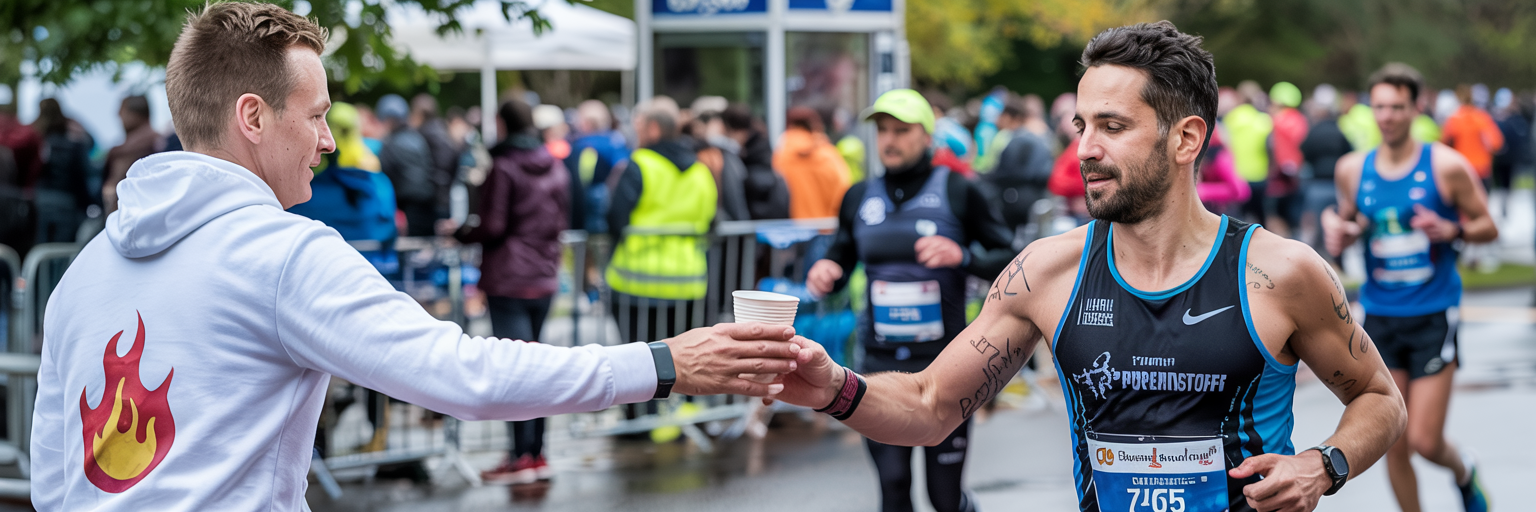Questions and Answers
Below we have compiled our most common questions and answers.
Questions about delivery costs and delivery times?
For orders over EUR 60 in Germany, EUR 100 in Austria and France and when using our predefined shipping service providers, we offer free shipping. All shipping costs are displayed during the payment process after entering the address and selecting possible options such as express shipping or standard shipping and the volume of the delivery. Please give us time to fully and professionally package your delivery (the delivery time is usually around 3 working days).
Money-back guarantee?
We offer a money-back guarantee on the product price if you are not satisfied with our product. The product may have been opened, but must contain at least 45% of the filling quantity and must not be contaminated or damaged. We will decide on the refund after receipt and inspection of the goods. You can use our corresponding form to make a complaint.
Which payment methods are accepted?
We accept various payment methods such as bank transfer, PayPal and other payment platforms that are considered secure. We guarantee that the payment method and payment information will be processed in a protected and secure manner.
Exchanges, Returns and Refunds
The satisfaction of our customers is particularly important to us. There can be various reasons for a possible complaint about our products. Due to hygiene reasons and the fact that our products are nutritional supplements, i.e. food, we generally do not take back opened packaging. The ingredients in our products GRUNDLAGE, BELASTUNG and WETTKAMPF do not contain any artificial flavors or preservatives. We have only used citric acid (E330) as an acidifier. If you have an allergy or intolerance to this substance and find that you react to it, you can also complain about opened packaging. Please send us an email to the email address provided in the CONTACT section. We will then get in touch with you immediately. Before you return a product to us, please always CONTACT us so that we can coordinate the process with you. Unfortunately, we cannot accept returns without a recognizable or understandable reason and will not refund the purchase price. Reduced or discounted goods or purchases made using a voucher are generally excluded from returns and refunds. Returns or refunds can only be made for goods that have been proven to have been purchased via the online shop. Purchases from a certified retailer can only be complained about on site.
How can I place an order?
Placing an order is easy and convenient. Simply search for the product(s) of your choice in our online store and place the product(s) in your shopping cart. Start the ordering process by entering your delivery address, shipping method and payment method and complete the ordering process after entering all the information. Once your order has been confirmed, we will take care of the little things like packaging and shipping. You can then look forward to the delivery...
How long does delivery take?
We always endeavour to confirm the order promptly and prepare it for dispatch. This process usually takes no longer than three working days. The delivery process depends on the delivery location and the delivery method selected during the ordering process. Unfortunately, we have no influence on the delivery process by the delivery company commissioned. However, you will usually be kept up to date on the delivery process by the delivery company.
Can I track my order?
Absolutely! If we have the necessary contact information from you, we will send you a tracking number from the shipping service provider when we ship the item and you can track the delivery with the shipping service provider. Please understand that we usually do not have more detailed information than the service provider. We also have no influence on any delivery options. Please contact the shipping service provider directly using your tracking number. Thank you for your understanding.
How good is the solubility of the products?
The products are characterized by a high solubility due to their composition. The powder is dissolved in the intended dosage within a few minutes and leaves no lumps or crumbs. The solution is completely colorless and does not leave any discoloration in drinking bottles or similar.
How do the products taste?
We use glucose sources in different compositions and concentrations. Therefore, the products with a higher dosage taste a little sweeter than the products with a lower dosage. The salt works together with the citric acid to create a pleasant, slightly sour taste (slightly lemony) that is well tolerated over several hours.
Do I need extra salt if I sweat a lot?
Why are there no vitamins included?
In the area of antioxidants, vitamins are counterproductive in stressful situations when it comes to achieving adaptations in performance. Antioxidants suppress oxidative processes in the body that are necessary for adaptations. Other vitamins make no sense in a targeted sports diet. They are usually not absorbed in stressful situations or they disrupt the metabolism. For this reason, we have dispensed with any vitamins as additives.
Why are there no other minerals included besides salt?
All other minerals are not necessary in the specific stress situation and are not absorbed in the intended form. There is also a risk that these minerals may be useful in a single dose, but can lead to an overdose over several hours. For this reason, we completely avoid adding minerals. Magnesium, for example, has to be stored in the form of a depot over several days anyway. Acute supply in the stress situation therefore makes no sense at all.
Example potassium:
Potassium and magnesium complement each other in their effects. A maximum of 150mg of potassium should be consumed per 750ml (one drinking bottle). If we calculate this over a long distance of 12 hours with one drinking bottle each, that means that the athlete would consume a total of 1800mg of potassium. This is then combined with 100mg of magnesium per hour, which would mean that the total intake would be 1200mg. This combination is very likely to have a laxative effect. Potassium can also lead to vomiting and nausea in large quantities. But taking potassium during exertion makes no sense at all. Potassium is necessary for building up glycogen stores and is stored with them. The release of the necessary potassium during exertion occurs in conjunction with the glycogen stores. So with proper preparation, there is enough potassium stored in the body. The same applies to magnesium. The depot is important here. Intake during exertion carries the risk of having a laxative effect and only putting additional strain on the stomach and intestines. That is why we do not use these additives.
Why are there no proteins included?
Proteins have an anabolic effect and are also used to generate energy during physical exertion. However, there are sufficient physical reserves to make these proteins available in small quantities. The substances that are important for energy are dextrose, fructose and sodium. We have limited ourselves to these, as we work specifically in stressful situations. Using proteins for regeneration makes sense and should be done with a readily available protein source in a protein:carbohydrate ratio of 1:3 to 1:5.
Are the products anti-doping compliant?
All of our products fully comply with the regulations of the World Anti-Doping Agency (WADA) according to the latest publications ( current list ). We have also provided the conformity statement for our respective products. Our products are manufactured exclusively in Germany and certified under ISO 22000 and FSSC 22000. The individual batches are numbered, certified and documented. All batches are documented in a traceable manner and these certificates can also be requested if required. We are absolutely transparent!
Why should I add BELASTUNG from the start to more than 2 hours of basic training?
The classification of products into the stress ranges provides a guideline for differentiation. However, the energy supply is ultimately decisive for the use of a product depending on the duration and intensity. The glycogen stores are the limiting factors.
With a total glycogen reserve of around 2,600 kcal, 150g / 600 kcal are in the liver and around 500g / 2,000 kcal are in the muscles. With an hourly consumption of between 600 kcal and 800 kcal in the area of zone 1 to zone 2, the liver glycogen is roughly used up after one hour. The muscle glycogen stores are still about half full even after 2 hours with a supply of 30g of carbohydrates per hour.
However, in the first step, the glycogen stores from the liver (150g, 600 kcal) are activated. To activate the glycogen stores in the muscles (approx. 500g, 2,000 kcal), the muscles need more intensive exercise. This means that these glycogen stores are not activated as strongly in zone 2 (fat burning training). This means that more than 2 hours of fat burning training with 30g of carbohydrates per hour also leads to an increased feeling of exertion.
This is also the reason why a fasting run for longer than 1 hour makes no sense. Then the liver's glycogen stores are used up and the muscle glycogen would have to be activated.
Fat burning always occurs in combination with glycogen burning. Fat burning requires atoms from glycogen burning to work efficiently.
Now you want to do basic training for over 2 hours. To do this, however, you want to avoid the feeling of strain as much as possible and be well supplied with energy. The energy supply plays a major role here and from the start you should therefore also provide the appropriate amount of exercise. This protects the liver glycogen stores (and also the muscle glycogen stores). In addition, the body gets used to the external energy supply with exercise (glucose/fructose). For this, I used a special composition of the various glucose sources during exercise (we are the only ones who do this) and combined it with 1:1 fructose. The fructose goes directly to the liver as a replacement for liver glycogen.
However, if you are exercising in a controlled, relaxed manner and there are no peaks in the load, it would also be possible to work with a base of 60g (double portion). This is best done on an exercise bike/smart trainer, where the load can be controlled extremely well. This would result in particularly good fat metabolism training. It would definitely make sense.
What is the difference between glucose and dextrose?
Glucose and dextrose are types of sugar, just like fructose . However, it is important to note that the term "sugar" is often used as a synonym for table sugar. Let's clarify the differences.
Dextrose belongs to the group of carbohydrates, which, along with fats and proteins, are the most important nutrients for humans. It is the most important simple sugar and is also commonly called grape sugar or, in medicine, glucose. However, the different names always refer to the same molecule.
In ingredient lists, however, the legally prescribed names must be used. According to the Sugar Types Regulation, "dextrose" (monosaccharide) and "sugar" (sucrose, disaccharide) are defined differently. Monosaccharides are dextrose on the one hand and fructose on the other. According to the regulation, dextrose must also be listed separately in the ingredients.
Dextrose is a monosaccharide with a particularly high glycemic index and is contained in our products as dextrose monohydrate. This means that this molecule is already optimally available for absorption in the digestive tract. This means that this dextrose is also very quickly available in the body. This makes dextrose particularly interesting for use as a carbohydrate in sports.
In the food industry, glucose dry powder is often abbreviated to dextrose. Glucose dry powder always consists of one part dextrose (grape sugar, simple carbohydrate) and one part glucose (complex carbohydrate) due to the production process (enzymatic breakdown). Dextrose dry powder D30 is often used, which means a dextrose content of 30%. It is obtained from grain and is now also available in organic form.
The term maltodextrin , on the other hand, is a combination of the words maltose (malt sugar, complex carbohydrate) and dextrose (grape sugar, simple carbohydrate) and a mix of different carbohydrates. Maltodextrin has the special feature that although it binds little water, it dissolves easily in water. Maltodextrin is essentially obtained from corn starch, which in turn is obtained from genetically modified corn plants.
Maltodextrin and glucose dry powder are also generally referred to as glucose syrup or glucose syrup dry powder. The production of both products is identical. Only the raw materials used differ.
Dextrose , glucose and maltodextrin contain little or no fructose . This means that in combination with a separate fructose source, a specific glucose:fructose ratio can be created.
Complex carbohydrates take longer to be absorbed by the body. The body must first convert the complex sugars into simple sugars in order to be able to absorb the resulting dextrose. Accordingly, it is important which ingredients are actually contained in the product. The composition determines the speed at which carbohydrates are available.
The listing of nutrients in the nutritional table is regulated differently than the listing of ingredients in a product. Nutritional labelling is mandatory for almost all pre-packaged foods throughout the EU. This is stipulated by the EU Food Information Regulation No. 1169/2011 (LMIV). Here, the addition of all monosaccharides and disaccharides is mandatory under the term "sugar".
The confusion caused by the use of different names cannot be easily resolved. However, we have consciously decided to provide the ingredients list in as much detail as possible in order to create clarity about the ingredients. We believe it is more important that it is clear what is contained in the commercial name.
By the way, household sugar has nothing to do with glucose powder or dextrose monohydrate. Household sugar comes from sugar beet and always contains 50% fructose. This glucose:fructose ratio of 1:1 has been judged to be physiologically unfavorable in endurance sports under stress conditions. This has been shown by various studies.
Sources:
https://www.lebenmittelklarheit.de/fragen- Answeren/was-ist-der-Different-zwischen-dextrose-und-zucker
https://www.gesetze-im-internet.de/zuckartv_2003/ZuckArtV_2003.pdf
https://www.bzfe.de/lebensmittel/einkauf-und-kennzeichen/kennzeichen/naehrwertkennzeichen/
https://journals.physiology.org/doi/full/10.1152/ajpgi.00419.2010
What do I need to consider when using the bottle?
Please wash the bottles with warm water and detergent before first use and after each use and rinse with plenty of water.
Can I put the bottle in the dishwasher?
Yes, the bottles are dishwasher safe. However, the temperature should not exceed 40°, otherwise the bottle could be damaged.
How should I store the bottle?
Always store the bottle with the lid open so that it can dry out properly. This is especially important after washing.
Can I also use the bottle with hot liquids?
This is only possible to a limited extent. The bottle is not suitable for liquids with a temperature of more than 40°.
Can I also fill it with carbonated drinks?
The bottle is also not suitable or only partially suitable for carbonated drinks. The mouthpiece will pop out or the bottle could burst. Therefore, please be careful with carbonated drinks.
How do I remove the mouthpiece from the lid?
The mouthpiece has small tabs on the inside that hold the mouthpiece in place when you pull it out. This is necessary so that the mouthpiece doesn't slip out when you drink. With a light pressure on one of the tabs on the inside and a pull from the outside, you can pull the mouthpiece out without damaging it.









